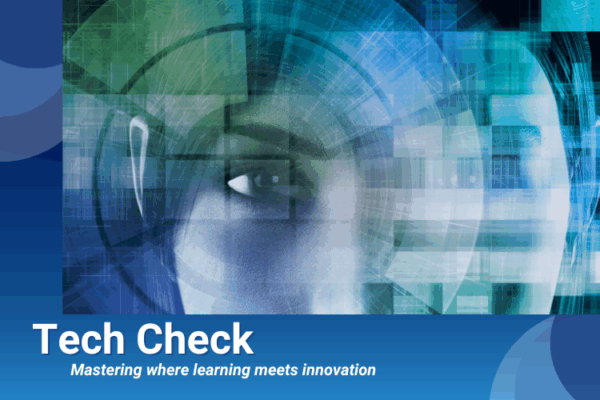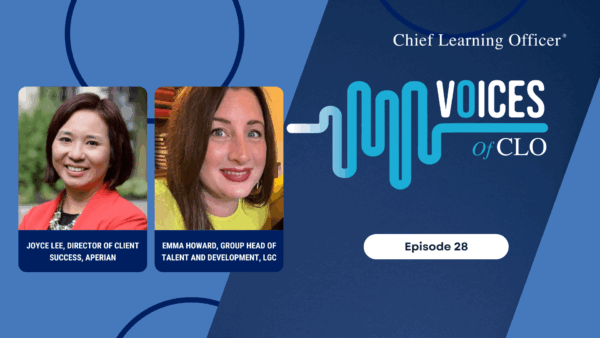Read any article on the current state of academics, and you’ll find stories about how online learning is revolutionizing the practice of higher education, whether for better or for worse. On the one hand, students and institutions tout the convenience of distance-learning offerings; on the other, quality watchdogs issue caveats about how online learning falls short of traditional classroom models. But what has been lost in the shuffle to jump on the bandwagon, or derail it, is the simple truth that the best online pedagogy is hardly revolutionary. In fact, it is not very different from the tried-and-true methods of past decades.
It is difficult to argue with the premise that higher education at its best has always been built on a foundation of heavy emphasis on writing, ongoing feedback, a material-rich environment and skilled teachers. The intersection of technology and education has not altered this equation. Rather, technology has enhanced the capacity for translating these ideals into effective classroom practice. The classroom may be virtual, but the methods are the same.
A conventional perception of online pedagogy is that it must overcome the obstacle of distance in order to achieve this ideal. But given online education’s particular niche in our educational system—generally, targeted learning for adults—much of what appears to be a disadvantage is actually an advantage. If effective education provides learning that enables students to meet the challenges of the world in which they must operate, online institutions acknowledge the new technology-enriched paradigm that is becoming prevalent in the marketplace. These institutions are charged with the task of building on pedagogical precedent, extending it into new territories without losing sight of the fundamental goals and methods that have always informed quality higher education.
Various online education models demonstrate how technology can end up prioritizing the very aspects that technology critics fear will be compromised in an online environment. For example, a virtual classroom is built around ongoing weekly loops of presentation, reflection and thinking and feedback. A lecture and presentation of primary texts begins the cycle, followed by discussion and group projects building on the original material. The cycle culminates with feedback, setting the stage for a repeat of the cycle with new material.
Online environments systematize this form of recursive learning—they must, since the “classroom” is defined solely by a text-based virtual environment. Students have at their disposal a full written record of the progress of the class, which facilitates integration of the various stages of the learning process. Since the learning tasks at hand structure the interaction between students and faculty members and among students, students are exposed to the course objectives on a continual basis. What might be taken for granted in a traditional setting is foregrounded in online learning by the task-focused nature of the medium. The absence of a physical setting requires that special attention be paid to course structuring and feedback loops between students and professors. Essentially, communication that has traditionally been weighted in favor of professor-to-student contact becomes two-way, with both parties receiving continual updates about what is happening in the classroom.
Ideally, pedagogy reflects the real-world professional communities that students will join, with the classroom a rehearsal for the real world. Effective educational models reflect the fact that knowledge is more than information—it is a set of transportable skills that can be used to organize, synthesize and evaluate new information. Students are exposed to a “sociology of knowledge”—meaning that they join a community with established protocols for assessing and interpreting the materials they study and learn how to value and use that information. As a result, technology winds up encouraging the development of communities that are no less intensive and transformative than their physical counterparts.
In the online world, the learning community forms around written communication instead of around the mere fact of physical proximity. The classroom’s reliance on written interaction means that online students end up writing more than they might in a lecture-based classroom setting. The reliance on writing also supports increased engagement with the material and feedback. With a written record of the course remaining available throughout the course and beyond, values like specificity of argument and relevance of evaluation become paramount. Moreover, without a physical back of the classroom to hide in, online learning communities can actually be more rigorous, more egalitarian and more likely to breed a sense of investment in the shared educational enterprise. With classes limited in size to ensure that all students get ample attention, online learning reflects a vision of education as interactive and collaborative, and reflective of the movement towards team-based approaches in the business world.
Even as the establishment of a learning community exerts a profound influence on the quality of the learning experience, educational models must also understand that mastery has a strong individual component. Since the goal of education is ultimately to teach students to teach themselves, effective online pedagogy must serve both of these ends. Online models have a special advantage in this regard, since, alongside the group-based learning strategies, students are required to engage in flexible and substantive one-on-one contact with professors. It is for this reason that online education tends to encourage independent thinking even in the context of group work. The online approach offers substantial advantages to those who want more than just a lecture and a test, opening up doors to continual communication with faculty members. This is why many traditional programs are following online education’s lead and adding elements of asynchronous communication to classes. Without time or place limits on access to faculty members, students can mold the learning experience to both their schedules and interests if motivated to do so.
Similarly, the best online models promise to deliver content-enriched learning. Online courses provide a material-rich environment that reflects the range of materials students will use in their professions. Books, the Web, databases and articles are brought closer by technology. Instead of having to travel to a library, students access the same resources from their home or office.
Obviously, the skills, training and commitment of the teacher are also critical to online pedagogy. Good teachers promote cooperation and critical thinking, communicate high expectations and provide prompt substantive responses to students, among other qualities. These same qualities that make for good teaching in a physical setting are also the cornerstone of online teaching practice. Online educational modalities place these qualities at the center of the course structure, systematizing areas like professor response time. The necessity for prompt feedback in a computer-mediated environment encourages the kind of ongoing support that is critical to effective teaching.
At the college level, many faculty members, while content experts, have little or no training in pedagogy. While teacher training is a widely acknowledged issue at the secondary level, it is often given short shrift in post-secondary education. But because online education is a new modality, training—helping faculty members translate their expertise into effective classroom practice via technology—is a key part of the teacher preparation process. The best online education providers put a great deal of effort into ensuring that faculty members are able to support learning effectively, with an emphasis on developing facilitation and feedback skills.
A particular strength of online education is its faculty recruiting model. Because online classes are frequently modular and address developing, in-demand areas, faculty members are recruited from the real world of practice. They teach to supplement successful careers in the professions because they want to; consequently they bring both a practical understanding and an enthusiasm for teaching that are often devalued in the traditional model. When combined with training, the introduction of new talent to the teaching profession—talent that might otherwise be lost—translates into increased educational value for students.
The same is true with regard to the alteration in student demographics that online learning encourages. The quality of an educational experience is dependent on the students as well as on the faculty and institution. In simple terms, interested students make better students and more intensive classrooms, elevating the educational experience for everyone. Because online learning is capable of meeting individual needs with tailored learning—both through degree programs and skill-updating modules—students can take control of their own educational future. The online model provides a vision of lifelong learning that is organic: Students move to the next level at a time when they are committed to furthering their education. In practice, this leads to classes full of students deeply committed to learning, who push and challenge each other in ways that are simply not possible in learning situations that are predicated on the standardized timeline that has implicitly governed the acquisition of skills and degrees.
This is crucial given that once out of school, many people have trouble returning. They burn out early and never go back for the education they planned. The demands of careers and families and the exigencies of geography and limited course scheduling often stand in the way. The introduction of technology into education has also enabled quality students to enter the educational process, and these students enrich the learning of their fellow classmates.
Online education as practiced is not designed to supplant traditional education—it is designed to provide an alternative model to address emerging content areas. As a result, online education has been forced to develop a pedagogy around clear objectives, building programs that provide targeted systematic learning and proven outcomes. The infusion of technology into education has enabled institutions to address learning needs directly linked to today’s demands. Since the results of online pedagogy are directly and immediately visible in the marketplace, attentiveness to outcomes takes on an added importance and provides a template for clear evaluation of pedagogical processes. Are students satisfied? Are they able to apply what they have learned in the work situations that their learning addresses? Are companies satisfied with the skills of those who have participated in online learning?
Online education is new—still evolving, still maturing. For institutions that are seeking to use online learning to respond to market needs, a “no” answer to any of the above questions would be disastrous. In this sense, online education is responsible to its constituents to an exaggerated degree: Its pedagogies must be flexible enough to continue to respond to both internal and external criteria.
In conclusion, it should be noted that online education has occasioned a renewal of research on and attention to post-secondary pedagogy in general. Online pedagogy is no doubt still in the process of maturing, but the reconsideration of what is most essential to the educational process has been healthy for both the online and traditional education communities. Ultimately, online learning amplifies the higher-order thinking skills that are acknowledged as the most desirable outcome of higher education. If technology has revolutionized education, it is less at the level of practice and more at the level of access. Rather than restricting the development of higher-order skills like critical thinking and analysis to those with access to a campus environment, online education reaches across geographical, economic and age boundaries to provide quality education to the broadest cross-section of learners. The radical promise of technology’s infusion into education is not necessarily in the transformation of pedagogical practice but in the transformation of educational demographics: Web-based learning adds the resources and efficiencies enabled by technology to the tried and true in order to create a paradigm where the ideals of lifelong learning and inclusiveness are no longer at odds with the higher-order thinking skills that have traditionally been the gold standard of education.
Brian Mueller has been with University of Phoenix since 1987 and has served as chief operating officer and senior vice president of University of Phoenix Online since 1997. In March 2002, he was promoted to executive vice president and chief executive officer. Mueller received his Bachelor of Arts and Master’s in Education from Concordia University. For more information on the University of Phoenix’s Online Campus, visit www.uoponline.com.
















